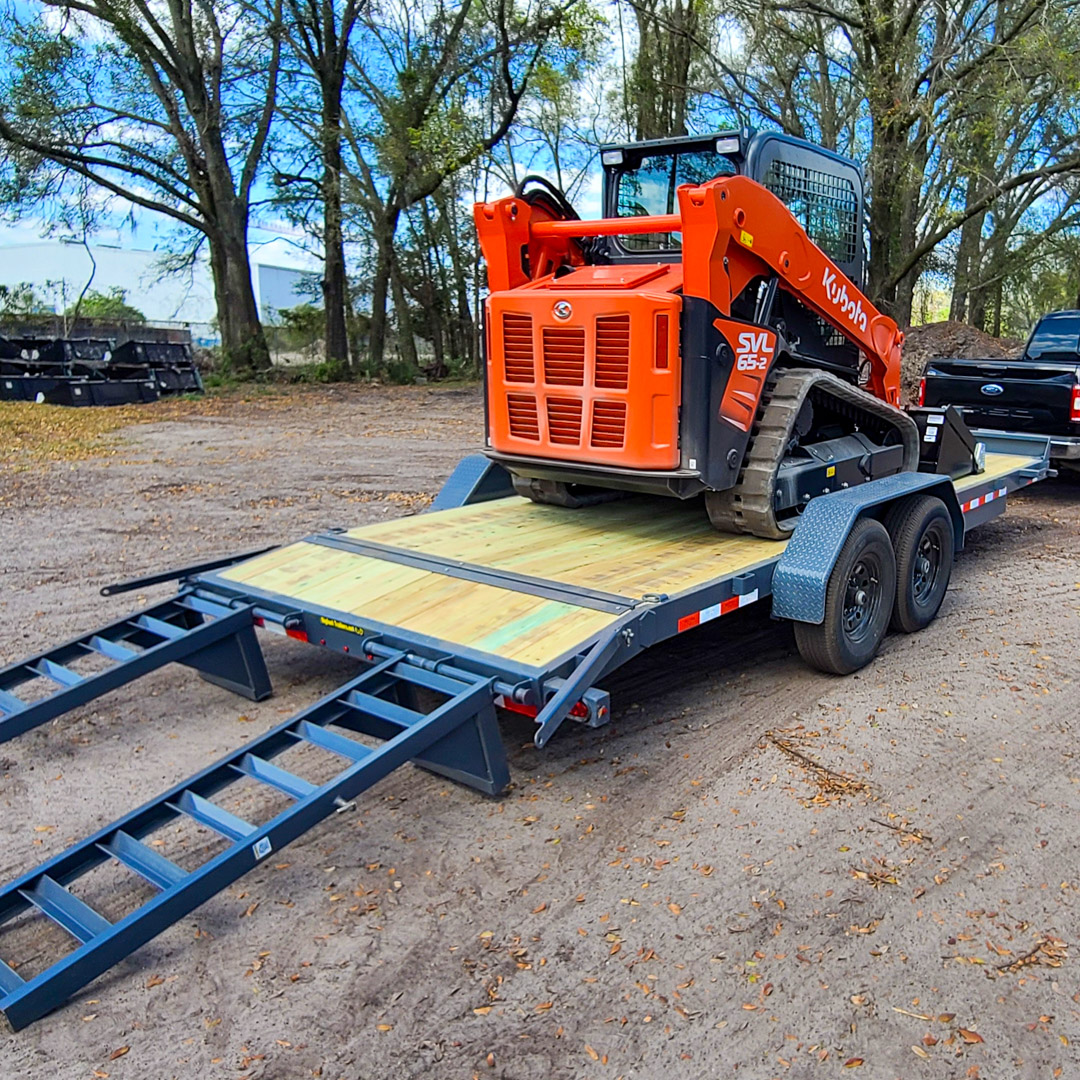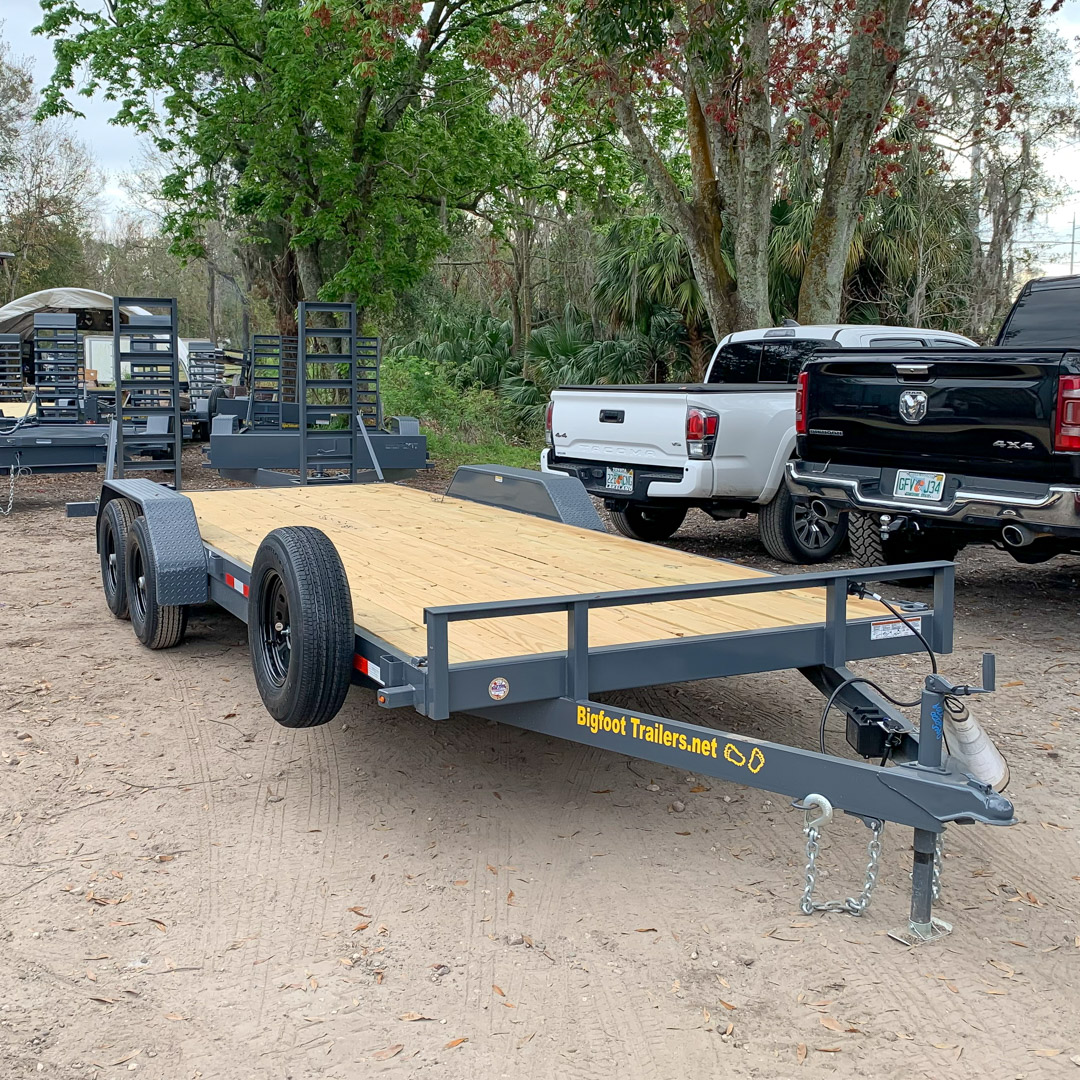Hauling Safely: Essential Tips for Trailer Transportation
Bigfoot Trailers are chock full of impressive features that make loading, hitching, and driving easy. Whether you’re a seasoned hauler or a weekend warrior tackling your first tow, navigating the open road with a trailer demands respect and preparation. So, before you strap down your load and hit the gas pedal, buckle up for these five essential tips for safe trailer transportation:
 Know Your Trailer’s Weight Limits
Know Your Trailer’s Weight Limits
All trailers have a maximum weight limit called Gross Vehicle Weight Rating (GVWR), which haulers should not exceed. Knowing your trailer’s capacity, tongue weight, and axle ratings is vital. The GVWR rating is usually stamped on the VIN label, and if your load exceeds this limit, you may receive a citation and a fine. Your tow vehicle also has limitations, so it is essential to check its owner’s manual to ensure it can handle the trailer’s and payload’s combined weight.
Pre-Departure Prep
Conduct a thorough pre-departure inspection. This means checking all tire pressures, including the spare, and ensuring they match the recommended levels for both trailer and tow vehicle. Inspect lights, brakes, and safety chains for proper functionality. A quick visual sweep of the trailer’s frame will identify potential loose straps or shifting loads. Remember, a few minutes spent checking now can save hours (and headaches) later.
Hitch with Confidence
Bigfoot trailers boast user-friendly hitching systems, but precision is critical. Ensure the coupler latch engages fully and the safety pin is secure. Double-check everything, then give the trailer a gentle tug to confirm a secure connection. Trust your instincts, and if something feels off, don’t hesitate to readjust or contact your nearest Bigfoot location for assistance.
Know Your Maneuvers
Hauling a trailer isn’t like driving a sports car, so avoiding sudden moves is essential for safe transportation. For example, anticipating the trailer’s swing, you must account for wider turns. Be extra cautious on uneven terrain, and remember, your stopping distance is now significantly longer. So, give yourself ample space between yourself and the car ahead without tailgating. Practice makes perfect, so find an empty parking lot and familiarize yourself with your Bigfoot trailer’s handling before hitting the open road.
Navigating the Weather
Preparing for unexpected weather conditions is critical, as Mother Nature can sometimes take us by surprise. If you notice bad weather on the horizon, postpone your trip if possible. However, if you must drive, adjust your speed according to the current conditions. For instance, heavy rain can reduce visibility, while slick roads compromise traction. It is best to be extra cautious on windy days, as gusts can push your trailer sideways. It’s important to remember that the laws of physics still apply, so it’s necessary to adapt your driving to weather conditions.
Winter Driving
When driving in winter, it is vital to be cautious of wet or icy roads. It is crucial to remember that even if the weather is sunny in a valley, it could be completely different uphill. Therefore, it is essential to pack your tire chains, learn how to put them on and watch for road signals that indicate any closures or chain requirements.

Also, keep a winter survival kit in your towing vehicle that includes the following items:
- First-aid kit
- Flashlight
- Batteries
- Blanket
- Snacks
- Water
- Gloves
- Boots
- Portable radio
Pack your patience, secure your load, and hit the road, knowing your Bigfoot trailer is equipped to handle whatever comes your way.
Where to Buy Bigfoot Trailers
Bigfoot Trailers delivers! As a factory-direct manufacturer, we service the entire Eastern United States with locations in Baltimore, MD; Columbia, SC; Jacksonville, FL; Providence, RI; and by appointment with retailers in Fort Myers and Marianna, FL. Call toll-free (866) 764-8878 or contact us online for a free quote.




